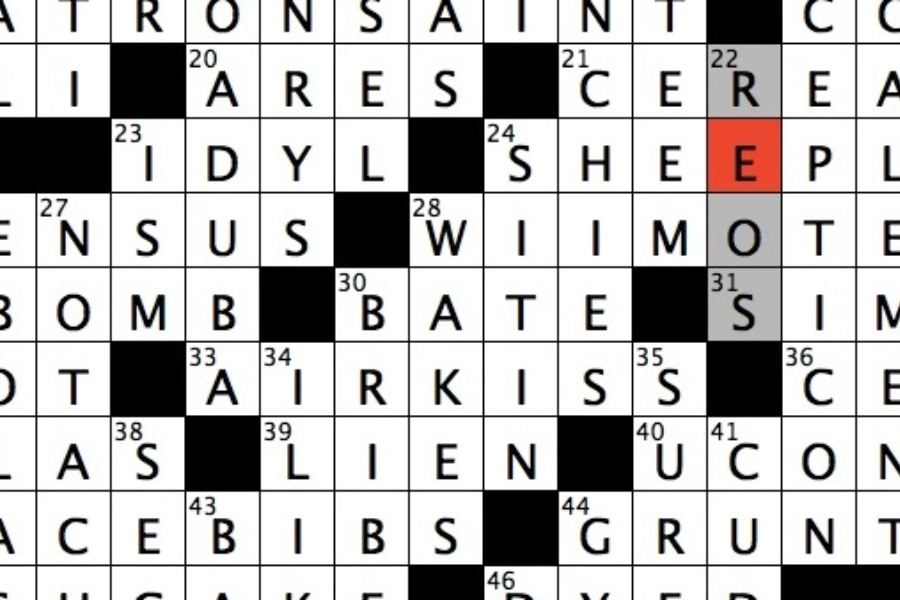Cracking the Code: Mastering the “Grunts” Clue in NYT Crossword Puzzles
New York Times Crossword enthusiasts know that some clues, like “Grunts,” can present a real challenge. Although they might initially seem tricky, solving these kinds of clues is an excellent opportunity to improve your puzzle-solving skills. By understanding the subtleties behind such clues and applying smart solving techniques, you’ll not only crack the toughest answers but also find greater enjoyment in your crossword experience.
What Does the “Grunts” Clue Really Mean?
When you encounter a clue like “Grunts” in a NYT Crossword puzzle, it’s important to think beyond the obvious. While “grunts” may immediately make you think of simple, low-pitched sounds, the clue could be hinting at a range of words that express frustration, anger, or discomfort. Common interpretations of “grunt” sounds include words like “GRR,” “SNARL,” or “HUMPH.” These words capture a range of emotional expressions, from growls to sighs of annoyance. It’s helpful to recognize the broader context of the puzzle to determine which answer fits best.
Popular Solutions for “Grunts” in NYT Crosswords
When solving this kind of clue, it’s useful to consider several potential answers. For example:
- GRR – Often used to convey an angry or growling sound.
- SNARL – A more intense and aggressive form of a grunt.
- HUMPH – A sound often associated with annoyance or dissatisfaction.
- UGH – A short exclamation of frustration.
- RUMBLE – A deeper, rumbling sound that could suggest a more forceful grunt.
In crosswords, the length of the word and intersecting answers play a crucial role in determining the right solution. Keeping an open mind to the different ways “grunts” can be expressed will help you solve the puzzle effectively.
Effective Strategies for Solving the “Grunts” Clue
To increase your crossword-solving success, consider the following strategies when tackling the “Grunts” clue:
- Pay Attention to the Answer Length – The number of letters in the answer can significantly narrow down your options.
- Think About Synonyms – Grunts can be represented by a variety of words, so exploring synonyms like “growl,” “snarl,” or “humph” can reveal new possibilities.
- Consider the Emotional Tone – The context of the puzzle may hint at the tone of the grunt. Are you looking for something that conveys anger, frustration, or exasperation?
- Use Intersecting Clues – The other clues in the puzzle may provide valuable hints about the word you’re seeking.
- Stay Flexible – Don’t settle on the first answer you think of. If it doesn’t fit the grid or context, be ready to try something else.
Avoid These Common Mistakes
While solving crossword puzzles, there are several common errors that can trip up even experienced solvers:
- Don’t Rush – Take your time and ensure you’re considering all possible answers, especially when you’re unsure.
- Ignore Length and Clue Context at Your Peril – The length of the answer is crucial in solving the puzzle. Always consider how many letters are in the word.
- Don’t Be Stubborn – If one answer isn’t fitting, be willing to explore other possibilities.
- Don’t Overlook Intersections – Other answers in the puzzle may provide vital context or clues.
Extra Tips for Crossword Success
To become a crossword expert, follow these additional tips:
- Practice Regularly – Consistent practice will enhance your vocabulary and familiarity with common crossword clues.
- Learn New Words – Read diverse materials to expand your knowledge base, making it easier to solve unfamiliar clues.
- Take Breaks – When you hit a roadblock, stepping away from the puzzle for a while can help you return with a fresh perspective.
- Work with Others – Solving puzzles with friends or fellow enthusiasts can provide new insights and approaches.
- Use Resources – Online tools, crossword apps, and solving forums can be excellent resources for learning and improving your skills.
Conclusion
The “Grunts” clue in NYT Crossword puzzles doesn’t have to be intimidating. By practicing and applying the right strategies, you’ll be able to tackle this and other challenging clues with confidence. Remember, patience and persistence are key. The more you practice, the more successful you’ll become in solving even the toughest puzzles. Enjoy the process and embrace the challenge as an opportunity to sharpen your skills!
Unlock the latest insights and trends in app development at theappkod.







